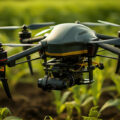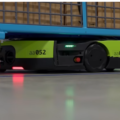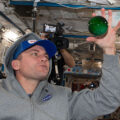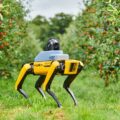Guardians of the Deep: How Ocean Robots are Patrolling the Blue Frontier
Imagine diving into a world of vibrant coral reefs teeming with life, only to find plastic bags snagged on the delicate branches. This sobering reality is what faces our oceans today – a vast expanse threatened by a silent enemy: pollution. From plastic choking marine creatures to chemical cocktails disrupting ecosystems, the health of our blue planet hangs in the balance.
But fear not, for a new breed of hero is emerging from the depths – ocean robots. These are no clunky automatons of yesteryear; these are sleek, sophisticated machines, each with a unique role to play in patrolling the blue frontier.
Silent Sentinels: Unveiling the Enemy
I’ve spent years studying the intricate dance of life in the oceans, and the silent invasion of pollution is deeply concerning. Thankfully, ocean robots are becoming my extended eyes and ears. Autonomous Surface Vehicles (ASVs), powered by the sun itself, tirelessly patrol the surface, collecting vital data on water quality. They act as the first line of defense, measuring temperature, salinity, and dissolved oxygen levels, all crucial indicators of a healthy ocean. But the enemy often lurks beneath the surface.
This is where Autonomous Underwater Vehicles (AUVs) come in. These untethered heroes plunge into the inky depths, equipped with an arsenal of high-tech sensors. Spectrometers, like miniature CSI units, analyze the light spectrum, identifying the fingerprints of specific pollutants. Fluorometers, on the other hand, measure chlorophyll, an indicator of phytoplankton abundance – the foundation of the marine food chain. Any disruption in these levels can be a red flag for pollution.
Gliders: The Ocean’s Persistent Patrollers
For long-distance surveillance, gliders take the stage. Imagine a sleek, wing-shaped robot silently gliding through the water column, using changes in buoyancy to move up and down. These energy-efficient marvels can cover vast areas, collecting data over weeks, painting a detailed picture of pollution’s reach.
The data collected by these robotic guardians is a game-changer. We can now pinpoint pollution sources, track the movement of oil spills, and understand how pollution levels fluctuate over time. This knowledge is the ammunition we need to fight back.
Beyond Monitoring: Active Guardianship
But these robots aren’t just passive observers. They’re evolving into active protectors. Imagine high-resolution cameras mounted on AUVs, meticulously mapping the seafloor, identifying sensitive ecosystems like coral reefs – the underwater rainforests of our planet. This information is critical for designating marine protected areas, ensuring these fragile havens remain untouched.
Furthermore, these robots can track populations of fish and other marine animals, helping us understand the impact of pollution on the intricate web of life. Some robots are even being equipped with tools to directly remove debris and microplastics, becoming the clean-up crew of the underwater world.
Challenges and the Road Ahead
The path forward isn’t without its hurdles. Developing and deploying these marvels of engineering can be expensive. The sheer volume of data collected by these robots requires robust storage and analysis infrastructure. Most importantly, we need to ensure responsible development and deployment, minimizing any potential harm to the very environment we’re trying to protect.
However, the future is bright. Rapid advancements in technology and increased collaboration between scientists, engineers, and policymakers are propelling us towards a future where ocean robots play an even greater role.
A Brighter Future for Our Blue Planet
Our oceans are the lifeblood of our planet, cradling a breathtaking diversity of life and regulating the Earth’s climate. With ocean robots as our partners, we have a fighting chance. These tireless guardians are helping us monitor pollution, understand its impact, and develop strategies for a cleaner future. By working together, we can ensure the health of our oceans for generations to come. The future of our blue planet depends on it.










